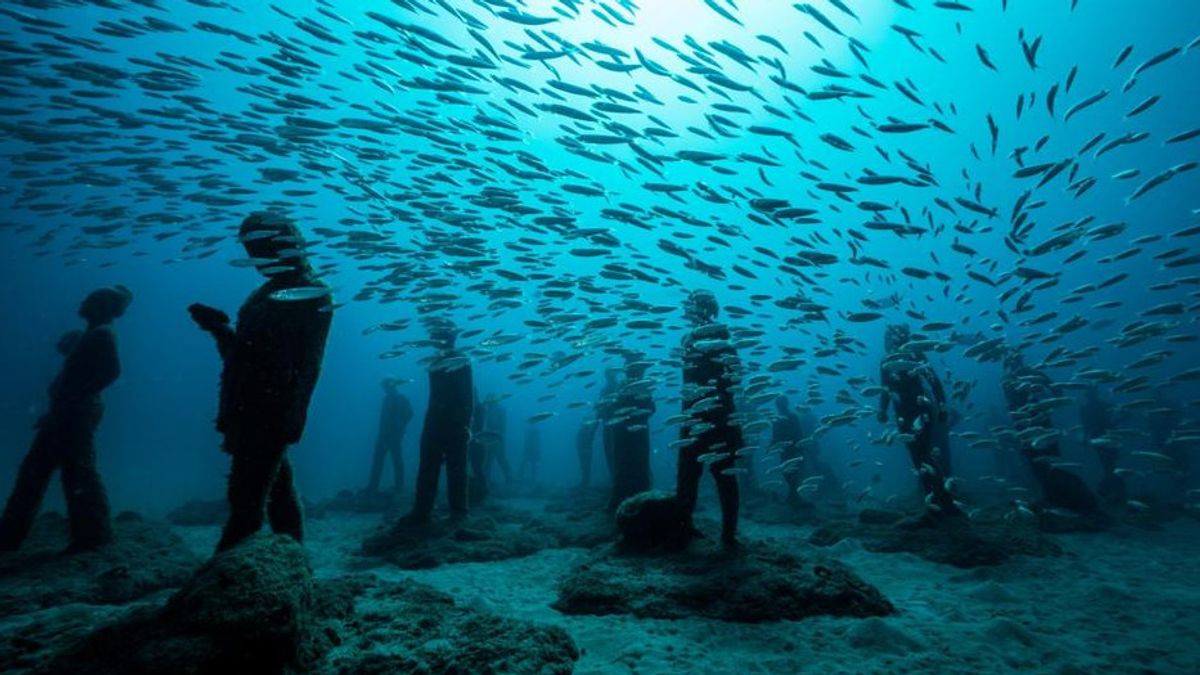JAKARTA - An underwater ecomuseum has just opened near the Island of Sainte-Marguerite, off the coast of Cannes, France. Six mask-shaped sculptures have been installed on the seabed designed to push marine life back into the area.
Each piece is made of PH neutral material and features a textured surface to create a home, breeding area and shelter for marine life.
These statues were placed between the Posidonia seagrass beds. Commonly known as Neptune grass or Mediterranean tapeweed, it forms large underwater grasslands, an important part of the marine ecosystem.
Seagrass plants are sometimes known as the 'lungs of the ocean', because they can produce oxygen in very large quantities. To keep everything underwater, even ships were kept away from this area, so that the anchors would not be damaged.

Funded by the Mairie de Cannes, the project took four years to develop. The site was once littered with debris such as old machinery and pipelines, which were cleared to make way for the museum.
"From land, we see the surface, calm and serene, or strong and majestic. But beneath the surface of the water, there are fragile ecosystems. Ecosystems that have been continuously degraded and polluted over the years by human activity," said sculptor Jason deCaires Taylor who make the statues, reports Euronews.
This is his first installation on the Mediterranean Sea, but this British artist has previously created works of art that are ocean-friendly. From exhibiting marine life in a fjord in Oslo, Norway, to helping restore coral reefs in Grenada that were 'destroyed' by hurricane Ivan. His work has been placed in waters around the world.
"In general, my goal is to change our relationship, the way we view the ocean," said deCaires Taylor.

He explained that often we think of tropical places like coral reefs in terms of conservation, but other, less clear underwater locations can be just as beautiful and their biodiversity.
“Each location has a different environment and challenges. In Norway, it's a very cold brown fiord that I don't really want to dive in. However, once in the water, there is an abundance of marine life. I even saw seagulls diving underwater, "he said.
According to him, scientists can monitor the development of flora and fauna that are attracted to the statue. In addition, the sculptures he makes are meant to house the growth of marine life, as has been seen in several other projects.
In the Canary Islands, for example, deCaires Taylor says work with local universities has shown a 200 percent increase in biomass and found that the art helps protect the seabed from strong currents.
The English, Chinese, Japanese, Arabic, and French versions are automatically generated by the AI. So there may still be inaccuracies in translating, please always see Indonesian as our main language. (system supported by DigitalSiber.id)










